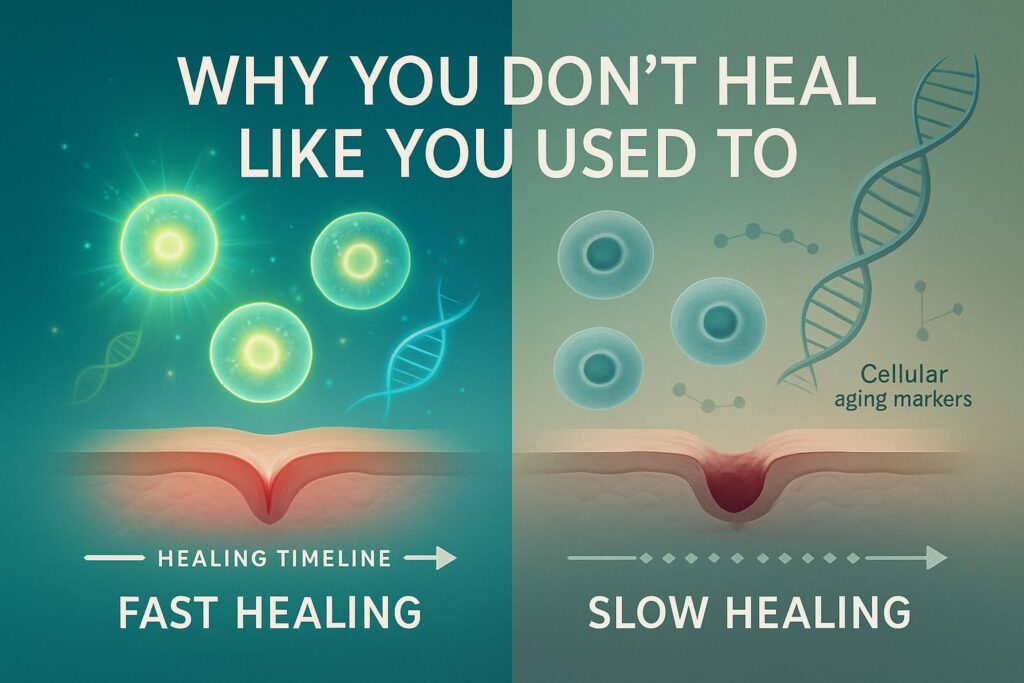Have you ever wondered if there is a breakthrough treatment that can help your furry companion recover from injuries or ailments?
What if there was a way to harness the power of your pet’s own cells to repair and regenerate damaged tissues? The answer lies in the field of regenerative medicine and the incredible potential of stem cell therapy for pets.
Stem cell therapy has revolutionized veterinary medicine, offering a promising approach to treat a variety of conditions in pets. These unspecialized cells can be obtained from your pet’s own body, such as bone marrow or adipose tissue, and have the ability to transform into different types of tissues, including bone, muscle, and nerve. By injecting these stem cells into the affected areas, veterinarians are able to stimulate the healing process and promote tissue regeneration.
Key Takeaways:
- Stem cell therapy offers a potential solution for pets with conditions such as osteoarthritis, bone and ligament injuries, and inflammatory diseases.
- The therapy involves collecting stem cells from your pet’s own body and injecting them into the affected area.
- Stem cell therapy is considered safe, but its effectiveness varies from pet to pet, and realistic expectations are important.
- Research is ongoing to explore the full potential of stem cell therapy in veterinary medicine.
- Consult with a veterinarian experienced in stem cell therapy to assess its suitability for your pet.
What Conditions Can Be Treated with Stem Cell Therapy?
Stem cell therapy has shown promising results in the treatment of various conditions in pets. While it has been primarily used for osteoarthritis in dogs and cats, it has also demonstrated potential in healing bone injuries, ligament injuries, and spinal cord injuries.
Additionally, stem cell therapy has been explored as a treatment for kidney and liver disease, cardiomyopathies, and certain inflammatory skin and gut diseases.
Clinical trials are currently ongoing to evaluate the efficacy of stem cell therapy for these conditions and further expand its applications in veterinary medicine.
It is important to note that stem cell therapy is not appropriate for the treatment of cancer in pets, as it may worsen or accelerate the progression of the disease.
How Is Stem Cell Therapy Performed?
The process of stem cell therapy involves three main steps: collection, processing, and injection.
Collection
First, fat cells are collected from the pet’s body. This is usually done through a small incision while the pet is under anesthesia to ensure their comfort and safety.
Processing
Once the fat cells are collected, they are sent to a specialized laboratory where stem cells are obtained and concentrated. This step is crucial in preparing the stem cells for injection.
Injection
Finally, the concentrated stem cells are injected into the affected area. Common areas for injection include joints or tendons, where the stem cells can aid in the regeneration and repair of damaged tissues.
During the injection procedure, anesthesia is used to ensure that the pet remains comfortable and pain-free throughout the process.
It’s important to note that stem cell therapy is typically performed as an outpatient procedure, meaning that the pet can go home on the same day. Additionally, minimal special care is required post-treatment, allowing the pet to resume their regular activities within a short period.
Please note that the image above is for illustrative purposes only and may not depict the exact stem cell therapy procedure discussed in this section.
Is Stem Cell Therapy Safe for Pets?
When considering stem cell therapy for your pet, safety is a top priority. The good news is that stem cell therapy is generally considered safe for pets. This is because the stem cells used in the therapy are obtained from your pet’s own body, reducing the risk of rejection or reaction.
However, as with any medical procedure, there are potential risks involved. When the stem cells are injected into a joint or tendon, there is a small risk of inflammation, infection, or injury. It is important to be aware of these risks and have a thorough understanding of the potential benefits and drawbacks of the therapy.
Before proceeding with stem cell therapy, your veterinarian will discuss the specific risk factors with you. They will evaluate your pet’s overall health and advise you on whether stem cell therapy is a suitable option. It’s important to have an open and honest conversation with your veterinarian to ensure the best possible outcome for your pet.
Guidelines for Stem Cell Therapy in Pets
Currently, there are no specific guidelines for stem cell therapy in veterinary medicine. However, the American Veterinary Medical Association encourages further research and caution in the use of this therapy. Ongoing studies and research are being conducted to better understand its efficacy and safety in pets.
In the absence of specific guidelines, it is essential to work closely with a veterinarian experienced in stem cell therapy. They will be able to provide you with personalized guidance and recommendations based on your pet’s individual needs and circumstances.
By following the guidelines and recommendations provided by your veterinarian, you can help ensure the safety and well-being of your pet during the stem cell therapy process.

| Potential Risks of Stem Cell Therapy for Pets | Possible Reactions or Complications |
|---|---|
| Inflammation at the injection site | Fever or lethargy |
| Infection | Swelling or tenderness |
| Injury to surrounding tissues | Change in behavior or appetite |
Please note that the table above provides a general overview of potential risks and reactions associated with stem cell therapy. The specific risks and reactions may vary depending on your pet’s individual circumstances and the area being treated. Your veterinarian will discuss these risks in detail and address any concerns you may have.
Ultimately, while stem cell therapy is generally considered safe for pets, it is important to weigh the potential risks against the potential benefits. Your veterinarian will guide you through the decision-making process, helping you make an informed choice that is in the best interest of your furry friend.
How Can I Tell if Stem Cell Therapy Will Help My Pet’s Condition?
The decision to explore the potential of stem cell therapy for your pet depends on several factors, including their specific condition, age, breed, previous treatments and responses, as well as the severity and duration of the condition. A veterinarian experienced in stem cell therapy will consider these factors to determine the suitability of your pet as a candidate for this treatment.
It is important to set realistic expectations when considering stem cell therapy for your pet’s condition. While some pets may show noticeable improvement soon after treatment, others may take longer for any changes to become apparent. Unfortunately, there is currently no definitive way to predict which pets will benefit from stem cell therapy.
Each pet is unique, and their response to stem cell therapy may vary. It is essential to consult with your veterinarian, who can provide guidance based on their expertise and experience in this field. They will assess your pet’s specific circumstances, weigh the potential benefits against the risks, and determine if stem cell therapy is a suitable option for your furry companion.
Keep in mind that stem cell therapy is just one of the available treatment options, and your veterinarian will help you evaluate the best course of action for your pet’s well-being.
The Controversy Surrounding Stem Cell Therapy in Pets
While stem cell therapy has shown promise in veterinary medicine, there is still some controversy surrounding its use. The main concern revolves around the lack of regulations in treating animals compared to humans.
Veterinarians, however, have been diligently conducting research and studies to evaluate the efficacy and safety of stem cell therapy in pets. Although there is anecdotal evidence from pet owners and veterinarians highlighting the effectiveness of the therapy, the need for larger-scale studies is evident to provide more concrete evidence.
One of the risks associated with stem cell therapy in pets is the potential development of cancer. Recognizing this concern, ongoing studies aim to address this risk and establish guidelines to minimize any potential harm.
When considering the cost of stem cell therapy for pets, it is important to note that it can vary depending on various factors such as the type of procedure, location, and veterinarian expertise. On average, the cost of stem cell therapy for pets generally falls within the range of $2,000 to $3,000.
To give you a better understanding of the controversies and challenges surrounding stem cell therapy in pets, here’s a table summarizing the key aspects:
| Controversies | Regulations | Studies | Risks | Cost |
|---|---|---|---|---|
| Concerns regarding lack of regulations in veterinary stem cell therapy | Need for established guidelines to ensure safe and effective treatments | Research and larger-scale studies needed for concrete evidence | Potential risk of cancer development | Varies, average cost of $2,000 to $3,000 |

While controversy exists, it is important to note that stem cell therapy remains a promising field in veterinary medicine. Continued research, studies, and the development of guidelines will aid in addressing concerns and ensuring the safe and effective use of stem cell therapy for pets.
Conclusion
Stem cell therapy in regenerative medicine for pets offers a promising approach to treat various conditions, such as osteoarthritis, injuries, and inflammatory diseases. This innovative therapy utilizes the regenerative potential of stem cells to repair and regenerate damaged tissues and has shown positive results in some cases. However, it is important to note that the effectiveness of stem cell therapy may vary from pet to pet.
When considering stem cell therapy for your pet, it is crucial to consult with a veterinarian experienced in this field. They will be able to assess the suitability of your pet for the therapy and provide realistic expectations for the potential outcomes. While stem cell therapy is generally safe, it is essential to have a comprehensive understanding of the procedure and any potential risks involved.
Ongoing research and studies in the field of regenerative medicine aim to further enhance our understanding of stem cell therapy and its applications in veterinary medicine. As the scientific community continues to explore the efficacy and safety of this treatment, advancements in stem cell therapy for pets are expected. With the guidance of a qualified veterinarian, stem cell therapy can offer a hopeful option for improving the quality of life for our beloved pets.



